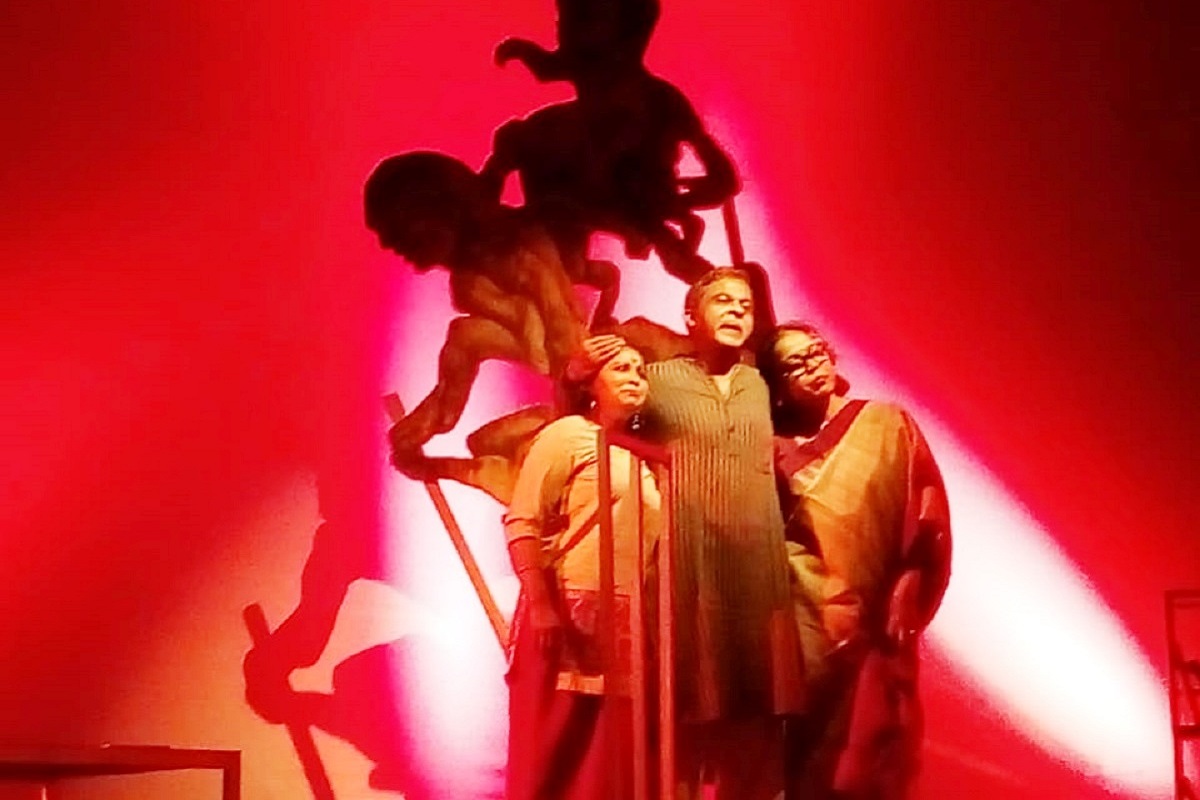5L plus students appear for HS exams this year
The West Bengal Council of Higher Secondary Education Examination (WBCHSE) kicked off today with more than five lakh students appearing for the board exams.
The play centred on an urban middle-class Bengali family of elderly Somnath and Jaya, who are outspoken Naxal supporters and were once firebrand Naxalites of the early 70s of the last century.

The production stood out for depth in theme and aesthetics. (SNS)
Navapalli Natya Sanstha (NNS), a leading amateur Bengali theatre group in the capital, brought to stage Naxalbari, a play based on a set of articles on the Naxalite movement that began in 1967, led by Jangal Santhal, near Naxalbari village in West Bengal.
The play, semi-fictional in nature, was presented at Bipin Chandra Pal Auditorium on 16 March.
Advertisement
Navapalli always tries to furbish their productions with new theatrical innovation and experimentations and play Naxalbari is one such bold attempt and the first of its kind thematically. Directed by Biswajit Sinha and scripted by Soma Sinha and Biswajit Sinha, the play is woven chiefly in the form of recollections that unfolds a saga of three generations.
Advertisement
The director explained to The Statesman that the play script is drawn from collections of old newspapers, books and listening of stories from seniors.
He said, “The play should not be confused with a docu-drama or a re-telling of what happened 52 years ago. Rather, the focus is on hitherto many unexplored, but significant aspects of a rebellious movement that started from Naxalbari, a tiny village of north-Bengal in the foothills of the Himalaya, where peasants were exploited and ruthlessly suppressed by the local landlords and moneylenders. This reached urban Bengal and appealed to the youths, particularly students from most esteemed colleges and universities, for whom the movement exemplified the precise way in which the establishment could be challenged and demands of the poor and landless peasantry could be asserted.”
The play centred on an urban middle-class Bengali family of elderly Somnath and Jaya, who are outspoken Naxal supporters and were once firebrand Naxalites of the early 70s of the last century. Fifty years have elapsed since Somnath has been the custodian of Jaya’s family. During the tumultuous days, Jaya went into wedlock with another comrade-in-arms and Naxalite leader Nirmalya Chatterji, who came from a privileged section of society, but highly inspired to rise in revolution. Today, Jaya’s daughter Shree is in her late 40s, pursuing her research on “Maoist challenge to the Indian State and Naxalbari at its Golden Jubilee”.
Shree, in the midst of her research work, tears the veil off another crisis ~ the ongoing conflict between the Maoist of today and the authority. She feels that war has not ended, but the form has changed, without upholding the arm revolution, she questions why have they taken to arms and willing to die even at the cost of their destruction in the chosen path.
Surya, the grandson of Jaya is the representative of the present generation who witnesses the willful and inadvertent refusal of the Naxalbari Movement and the Maoist phenomenon of today. On the whole, when everybody averts their eyes, this family proclaims: Naxalbari can never die…Naxalbari lives.
The cast was impressive as all actors contributed in some measure. The lead players, Palash Das as Somnath and Soma Sinha in the role of Shree, deserve special mention. Both are well-known faces on the capital’s Bengali stage.
Sayan Basu Ray delivers a wonderful supporting role of Surya. Other actors Kalyan Ghosal (Manimay), Anita Banerji (Jaya) and Abhijit Chakraborty (Amalkanti) convincingly essayed their respective roles. The make-up by Abhijit Chakraborty was effective, the minimalist approach in stage decor and brilliant and inventive light design by Subhayan Ganguly helped the director immensely. On the whole, the production stood out for depth in theme and aesthetics.
Advertisement